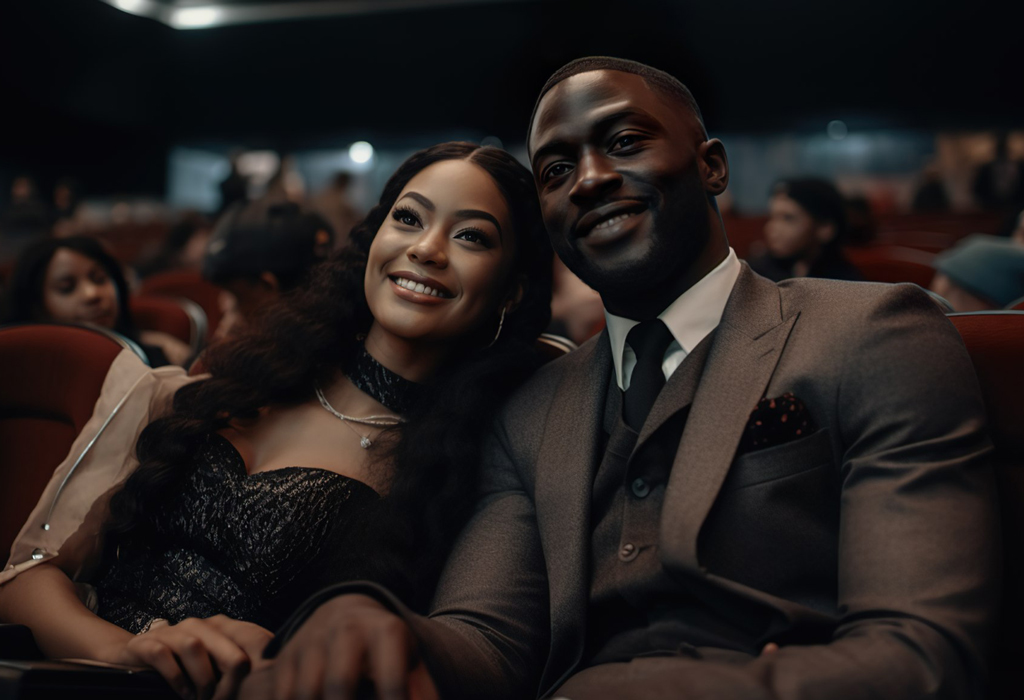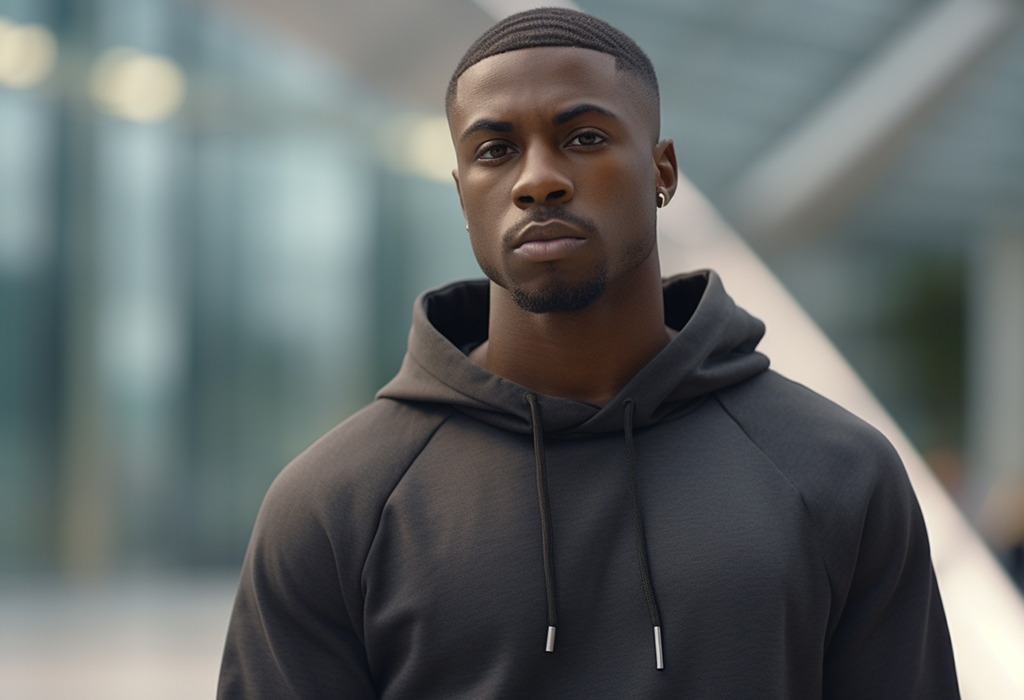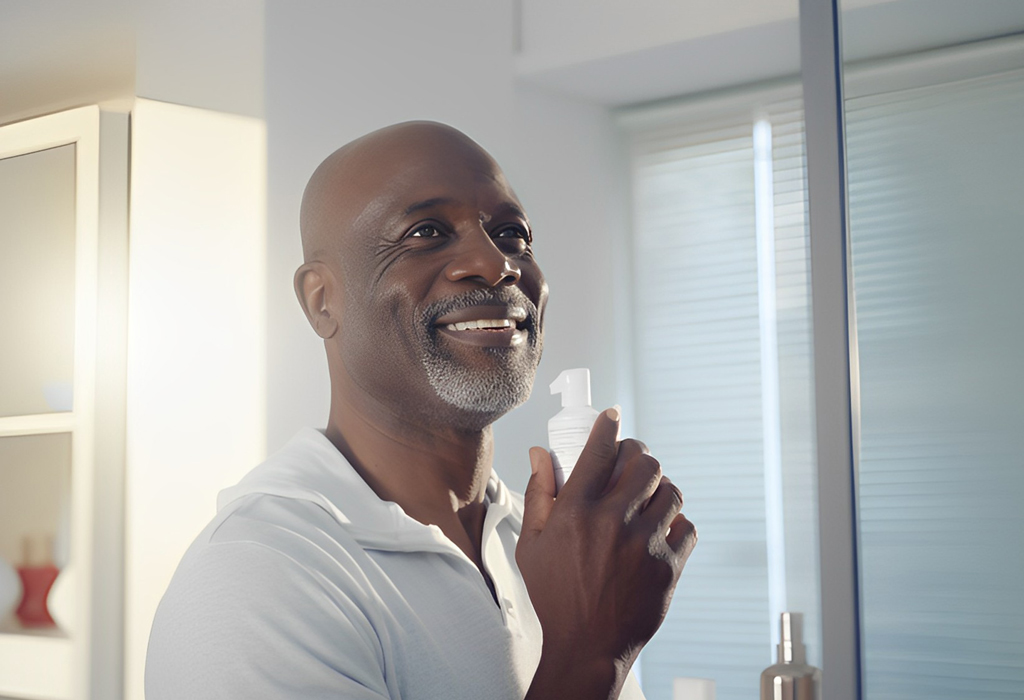What is the truth? What is taught to us about our reality from the beginning of our African-American existence? How does this influence how a black man should dress?
I wrote this article to discuss the things that don't get talked about, and that's the black man & style.
The black man's understanding of himself within our society and as a human being is misunderstood. I aim to ensure that the modern black man has the tools to put his best foot forward every time. Therefore, I created the 5 Truths For Black Men's Style.
In this article, you will find:
5 Truths For Black Men's Style

Truth #1 – Recognizing How Color Affects African-American Men
Color shouldn't isn't just your skin color. Understanding the color of your skin and the clothes that compliment them will build a powerful Image for the black man. Color and understanding how it impacts an outfit are vital to how a black man should dress.
Truth #2 – The 4 Hair Types
Stop worrying about hard to manage hair. The right hair product, a brush, and a haircut will always have you looking your best. That haircut will compliment your face. Seeing that this is what people will be looking at when they talk to you.
Truth #3 – Culture, Traditions, And Customs of the African-American
Why do so many black people have similar actions and habits? Recognizing where you come from will answer the many questions of who you are.
Truth #4 – The Black Man's Style
How does this change how a black man should dress? From slavery to Hip-Hop culture, to the American culture, all play an essential role in how you dress today.
Truth #5 – Grooming
Having a unique skin type doesn't have to be a disadvantage. The right skin products make things easier.
Knowing and applying the 5 Truths will have you walking tall, proud, and with purpose.
Going through the motions in life isn't enough. Teaching the everyday black man his role in the community, the workplace, and his identity is essential.
The people who fought for freedoms and rights have to count for something. This guide will provide black men with the tools needed to start their path to personal development. By not avoiding the 5 truths, you will be on a path towards being an improved individual.
Style And Grooming
There are not many options out there for the style and grooming issues that black men have. Writing this article has opened new education to me also. Being born in the south (Tennessee), many African-American traditions were instilled and practiced by my family without realizing it.
I can relate to the problems we have. This guide is to serve as a foundation of where to start. And depending on where you live, resources on style and grooming are minimal.
Growing up in the military presented many opportunities of meeting many different cultures of people. From my teens into adulthood, I realized of all the many places I lived, there were never really many options for taking care of a black man's needs or style.
I propose to develop strategies to educate, enlighten, and eventually build your confidence in yourself and inspire others to have confidence in you. Change is necessary.
Are you willing to sacrifice who you are for who you will become?
Recognizing How Color Affects African-American Men
Skin Color
The Fitzpatrick scale is a standard skin scale used for human skin pigmentation. It's is a numerical classification schema for human skin color. It classifies the typical response of different types of skin to ultraviolet light. There are 6 categories of the Fitzpatrick scale, but we will talk about Type 4, 5, and 6 since most African-American people fall into these numbers.
- Moderate Brown – Type 4: Typical Mediterranean skin tone, rarely burns, always tans well.
- Dark Brown – Type 5: Middle Eastern skin types rarely burn, tans very easily.
- Deeply pigmented dark brown to black – Type 6: Never burns, tans very well.
Skin Tones
If you're a darker skin tone, you have more freedom with clothes with bright colors.
Whites, pastels, shades of purple, pink, rich yellow, and orange look good with your skin.
The colors dark skin men should avoid are black or dark brown. I won't say not to wear these colors, but these colors don't compliment your skin tone the best.
Wear warm colors. Yellow, pink, and orange are good colors that bring out the natural glow in our skin. Contrast benefits the dark-skinned man. Contrast is to show differences when compared. It's all about complementing, not matching.
Going clothes shopping will have more ease since you know what compliments your skin best. Step outside the usual color scheme and reinvent yourself with color. When you get your first compliment, you will know you're on the right track.
The 4 Hair Types
Hairstyling in African-American culture is wildly varied. African-American hair is typically composed of coiled curls, which range from tight to wavy. Often, as men begin to lose their hair, the hair is either cropped or shaved entirely free of hair.
Since the beginning of African civilization, people have used hairstyles to convey messages to the greater society. Various styles would indicate a person's marital status, age, religion, identity, wealth, and rank within the communities of the culture.
Unkempt hair in African culture was considered unattractive to the opposite sex and a sign that one was dirty, had bad morals or was even insane. Hair maintenance created a sense of beauty.
- Type 1 (straight) – This hair is straight and not typical of the black community or mixed African ancestry.
- Type 2 (Wavy) – Deep waves with little or no curl. Coarse and stays in S shape.
- Type 3 (Curly) – Unique, fine and soft. Q-shaped pattern. Straight when wet but curls when it dries.
- Type 4 (Oily/Kinky) – Most textured of all hair types. Tightly curled and wiry, Z formation. Driest and most fragile of all hair types.
Most African-Americans have Type 3 and 4, with very few being type 2.
Nappy was a term used growing up, meaning people of African descent who do not chemically alter their hair texture. But the term was loosely used. When an African-American with type 4 wouldn't comb or brush their hair, their hair would kink up very tight to where you could see spaces in-between the kinks. If this happened, you would get made fun of for not taking care of your hair.
Care and Styling
No matter the hair type you have, now that you know your hair type, take the measures to take care of it, so it looks its best.
Find the resources near you if you have any available, or go online to buy the products you need to take care of your hair. Remember that many of the products used by non-African-American people don't work as well with these hair types.
Ask your African-American friends (if you have any) or look on the internet to determine where to get your haircut if you don't already have a barber you trust. It will save you hard-ache and disappointment. Not all barbers and stylists know how to cut or style our type of hair.
Get your haircut regularly and keep it groomed. There's nothing like having good hair and getting a new haircut. Something as simple as a haircut will make you feel like a new person.
Culture, Traditions, and Customs of the African-American
“For Africa to me….is more than a glamorous fact. It is a historical truth. No man can know where he is going unless he knows exactly where he has been and exactly how he arrived at his present place.” – Maya Angelou.
To understand where the Black men get their style, we need to give some history behind it; where we originated from to our current culture and style. We need to speak on slavery. It's irrefutable that it's what made the black culture.
Many of you guys are probably not from Africa. Even though you're born in the United States, you might think that most of your culture is American culture. I'm here to give insight into the African-American culture that is a part of you, whether you know it or not.
Times are much different now, but history tells a story. This story is one of the cultures of the African-American people.
From The Beginning

African-American culture (Black culture) in the United States refers to the cultural contributions of African Americans to the culture of the United States, either as part of or distinct from American culture. The distinct identity of African-Americans culture is rooted in the historical experience of the African-American people, including the middle passage. The “Middle Passage” was considered a time of in-betweenness for those traded from Africa to America.
The culture is both distinct and enormously influential to American culture as a whole. Slavery in America began when the first African slaves were brought to the North American colony of Jamestown, Virginia, in 1619 to aid in the production of such lucrative crops as tobacco.
Most aren't aware that slavery in this country didn't officially end until Dec.6, 1865, when the 13th amendment to the Constitution was ratified. It didn't end on Jan. 1, 1863, when President Abraham Lincoln issued his Emancipation Proclamation.
During Slavery
In the United States, the dominant forms of contemporary American music and common dance also came from America's African-based slave legacy. When slave masters and overseers in the United States discovered that drums could be used as a secret means of communication, they were banned.
In the place of drums, enslaved Africans in the United States substituted hand clapping and tapping the feet in poly-rhythmic cadences to reproduce the complex rhythms of African drumming.
The song was and continues to be a popular way for African Americans to recall past struggles. African-based oral traditions became the primary means of preserving history and other cultural information among the people. They did not rely on the written word. For the more significant part of American history, most blacks were not allowed to read or write.
“History will have to record that the greatest strategy of this period of social transition was not the strident clamor of the bad people, but the appalling silence of the good people.” – Martin Luther King, Jr.
Culture Today
During the 1970's the Dozens; a game of spoken words between two contestants, familiar in black communities in the United States, where participants insulted each other until one gives up. According to some, the game was almost exclusive to African-Americans.
Furthermore, Hip Hop later become a multicultural movement. However, it remains important to many African-Americans today in music and fashion.
In the south, religion is very active within the culture. Another common aspect of fashion in African-American culture involves how a black man should dress for worship in the black church. It is expected in most churches that an individual present their best appearance for worship.
African-American culture is a combination of what was bought to this land by the African slaves, the segregation of blacks throughout American history, and those values that make America.
African-American culture is visible in music, clothing, food, language, and religion. Has much changed from the past to the present in our culture?
Freedom has liberated us. But our mind-frame is still that of the old. The demand for the truth is essential. The 5 Truths For Black Man's Style commends the man who wants to venture side by side to discovering your true potential.
The Black Man's Style
We wear clothing to protect our bodies against nature, define our social roles, and express our personalities, but what happens when we wear clothing chosen by another.
In West Africa, where many American slaves originated, clothing was minimal and taken from newly enslaved people.
If you have not yet established your style, you may have conformed to what everyone else is wearing.
Depending on the demographic of where you live, it affects how a black man should dress.
Clothing is our second skin, and clothing projects an image to the world of how they see you. Men, you have to care about the projection of your image.
So what is a black man's style? Let's start with what options work well for black men.
How a black man should dress using colors
Most light colors work well with dark-skinned men: pastels, whites, oranges, and bright yellows. Bright colors are a part of our African-American culture. African culture is festive, and celebrations are held with a lot of color, vibrancy, and decoration.
Clothing

During the Civil rights movement, young black revolutionaries adopted the African culture of male head caps. They are now known as skull caps or Do-rags. Still to this day, African-American men frequently wear some headgear. Stereotypes of African-Americans continue to be present in regards to style and beauty.
Amid slavery, black people kept their best clothes for Sunday, their day off, and exercise that continued in freedom. Image is high in priority in the black communities. Is your image working for you or against you?
Clothing doesn't make the man; the man makes the clothing. Keep it simple and use tradition. The everyday man still wears the clothing of the past for style today. Using these traditions has greatly influenced how a black man should dress.
Grooming

African-Americans purchase nine times more on grooming products than any other ethnic group.
The preference for facial hair among African-American men is due to personal taste. We are prone to razor bumps, and many prefer not to shave. Black skin is less susceptible to wrinkling but becomes dry and flaky very quickly.
The challenge for the African-American man will be finding the right products for your hair, face, and skin. The internet is a great tool to find your grooming needs. Grooming challenges will be issues for African-American men for current and future generations. Use this article to discover how a black man should dress in today's world.
“It is the duty and high privilege of every human being to endeavor to improve himself. Effort at self-improvement is the definition sometimes given for religion. It may relate to our actions or to our convictions. In our actions we should aim at goodness; in our convictions, at truth.” – Joseph P. Bradley
The post How A Black Man Should Dress – 5 Fashion And Grooming Tips appeared first on Real Men Real Style.
https://www.realmenrealstyle.com/5-truths-black-men-style/
Did you miss our previous article...
https://manstuffnews.com/men-fashion/the-9-weirdest-modern-day-mens-fashion-trends
 Backyard GrillingWeekend WarriorsAdvice from DadBeard GroomingTV Shows for Guys4x4 Off-Road CarsMens FashionSports NewsAncient Archeology World NewsPrivacy PolicyTerms And Conditions
Backyard GrillingWeekend WarriorsAdvice from DadBeard GroomingTV Shows for Guys4x4 Off-Road CarsMens FashionSports NewsAncient Archeology World NewsPrivacy PolicyTerms And Conditions
